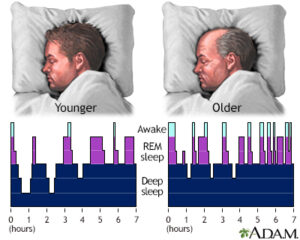Carboxylic acids make teens give off a pungent olfactory mix redolent of cheese, plum and even goats
Teenagers have a reputation for smelling, well, just a tad bit funky. According to the latest research, that stereotype might be more than habitual adult bias against the teen cohort—it could actually be rooted in solid science.
In a study published on March 21 in the journal Communications Chemistry, researchers characterized the chemical makeup of Essence of Teen and compared it with the smell composition of infants and toddlers. They found that, from both a qualitative and quantitative standpoint, children’s body odor takes a dramatically smelly turn after the onset of puberty. And there may be a good evolutionary reason for this shift.
Helene Loos, an aroma researcher at the Friedrich-Alexander University of Erlangen-Nuremberg in Germany and senior author of the new paper, began this research by attempting to pinpoint the cause of that fragrance change. She and her team first collected body odor samples from 18 infants and toddlers and 18 teenaged children. Then they analyzed the samples in the lab to determine what scent chemicals were present in each sample. They also combined their findings with a previous survey of 270 families that had indicated that parents found babies’ body odor much more agreeable than that of teenagers.
The researchers discovered pleasant citrusy and soapy-smelling aldehydes in the body odor samples from both age groups. In the underarm sweat of teens, however, Loos and her colleagues found a higher concentration of carboxylic acids—compounds that are associated with sharp, funky scents such as cut grass, cheese and goat musk. This chemical cocktail was much less pronounced in the infants’ samples. Additionally, two naturally occurring steroids with musklike odors were only found in the teens’ sweat.
The source of these stinky compounds is complex, but it starts with the activity of the sebaceous glands, which secrete sebum, an oily substance that helps protect your skin and keep your hair shiny and hydrated. The glands are active just before birth and then mostly go dormant for years. “They get very active again around puberty,” Loos says.
When the sebaceous glands reactivate, they encounter all sorts of bacteria and bodily substances—think sweat—that weren’t around during the infant and toddler years. These additional agents help break down sebum into the kind of smelly molecules that make up the characteristic teenage musk. Without much sebum, such compounds simply don’t form in high concentrations on a baby’s skin. Instead that sweet, milky scent that parents find very pleasant lingers.
“This makes a lot of sense because [baby odor] facilitates bonding between parents and children,” says Ilona Croy, a psychologist at Friedrich Schiller University Jena in Germany and a co-author of the new research. But that doesn’t last forever. Once children become teens and are no longer as reliant on their parents, becoming smellier to mom and dad can help them foster a degree of independence as they begin to strike out on their own.
“It’s good to see the sense of smell getting a bit more attention,” says Charles Spence, an experimental psychologist at the University of Oxford, who was not involved in the study. He cautions, however, that the research might be too preliminary to jump to any firm evolutionary conclusions.
“Bodily smells change over time,” he says, “but maybe they have no communicative purpose.”
For example, imagine a “new car smell.” Most people have a positive association with this scent, Spence says, even though there isn’t any good evolutionary reason for it. New cars are filled with volatile chemicals that don’t smell particularly nice on their own and might even be hazardous in high concentrations. Yet many people learn to perceive this smell as “good” because it represents the exciting, high-status act of buying a new car. This association is so strong that you can purchase air fresheners designed to make your old car smell like you just drove it off the lot.
Similarly, it’s possible that babies aren’t hardwired to smell nice to their parents. Infants certainly don’t consciously control their body odor in order to manipulate adults into feeding and pampering them. Through repeated exposure, however, parents might come to associate their child’s smell with the dopamine rush produced by caring for them, Spence says.
Croy and Loos agree that changing body odors are not a form of conscious communication. “It’s probably just a by-product,” Croy says. But just because the association is below the level of conscious awareness doesn’t mean parents aren’t evolutionarily predisposed to find baby scents pleasant and teenage scents repellant.
Croy cites previous research on stickleback fish that has shown that closely related individual sticklebacks dislike one another’s smell once they reach sexual maturity. Scientists hypothesize that this helps the fish avoid inbreeding when it comes time to choose a mate. A similar mechanism may be at play in humans, with infant smells provoking a deep-seated nurturing response in parents that later turns to avoidance once puberty begins. In other words, “I think what has changed is the receptors of the person who’s perceiving the body odor,” Croy says.
Looking ahead, Loos and Croy hope to pair their molecular odor data with magnetic resonance imaging scans of parents’ brain as they sniff their children’s body odor to determine whether a specific brain region is activated by the smell. The researchers also hope to identify whether some odor molecules stay consistent over the course of a person’s lifetime, the scent equivalent of an individual’s unique fingerprint.
But for now, they’re happy to be able to pinpoint some of the molecules behind teens’ unique funk. You can’t spell adolescent without “scent,” after all.




